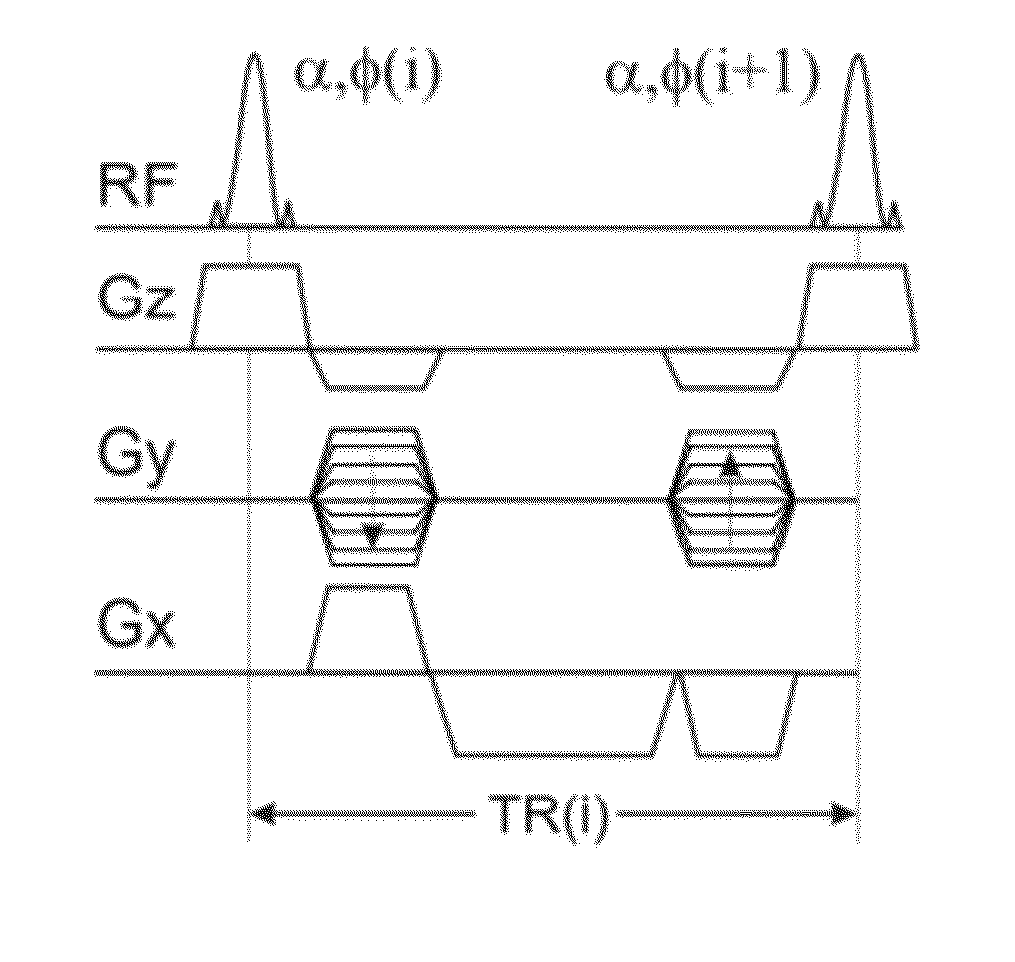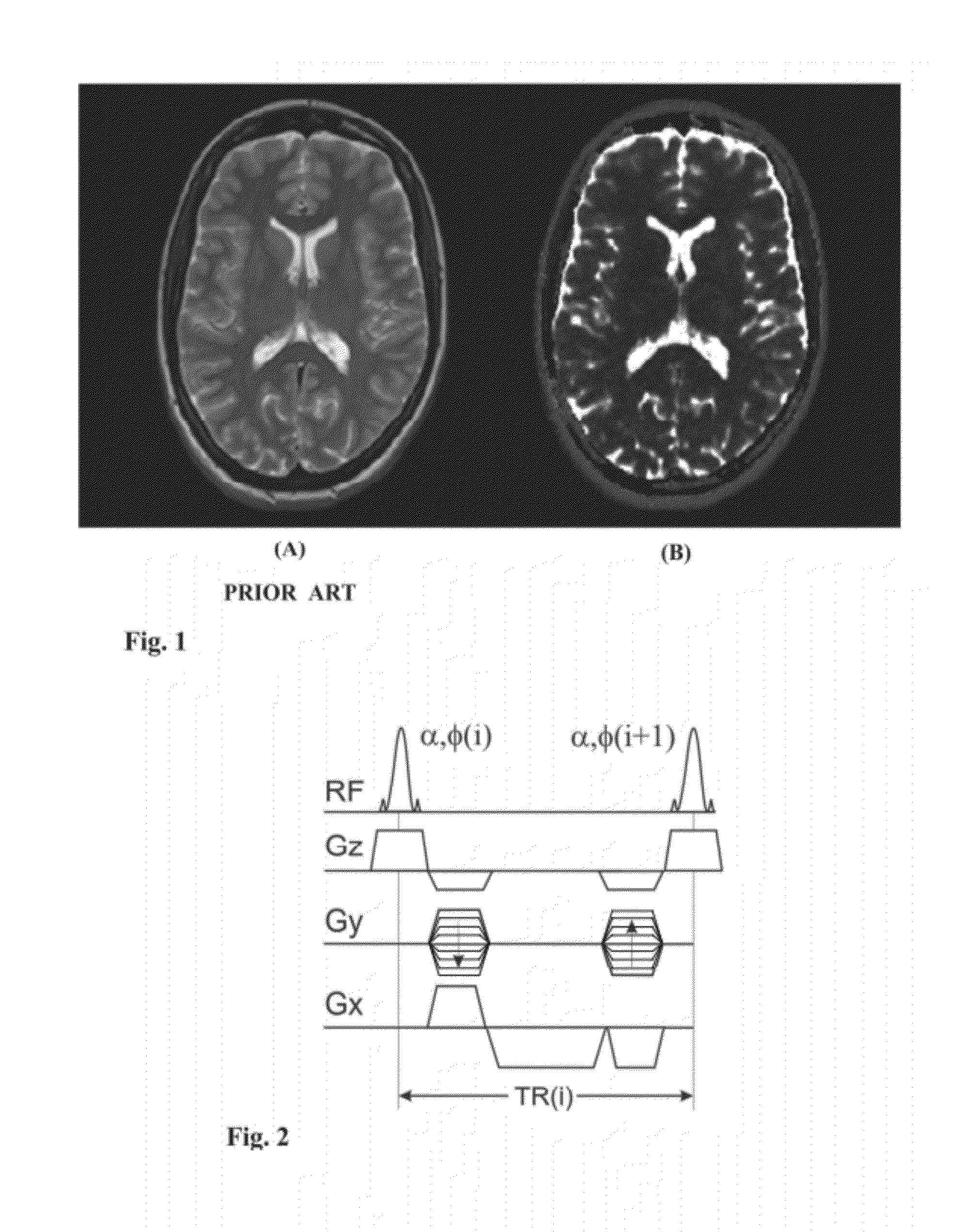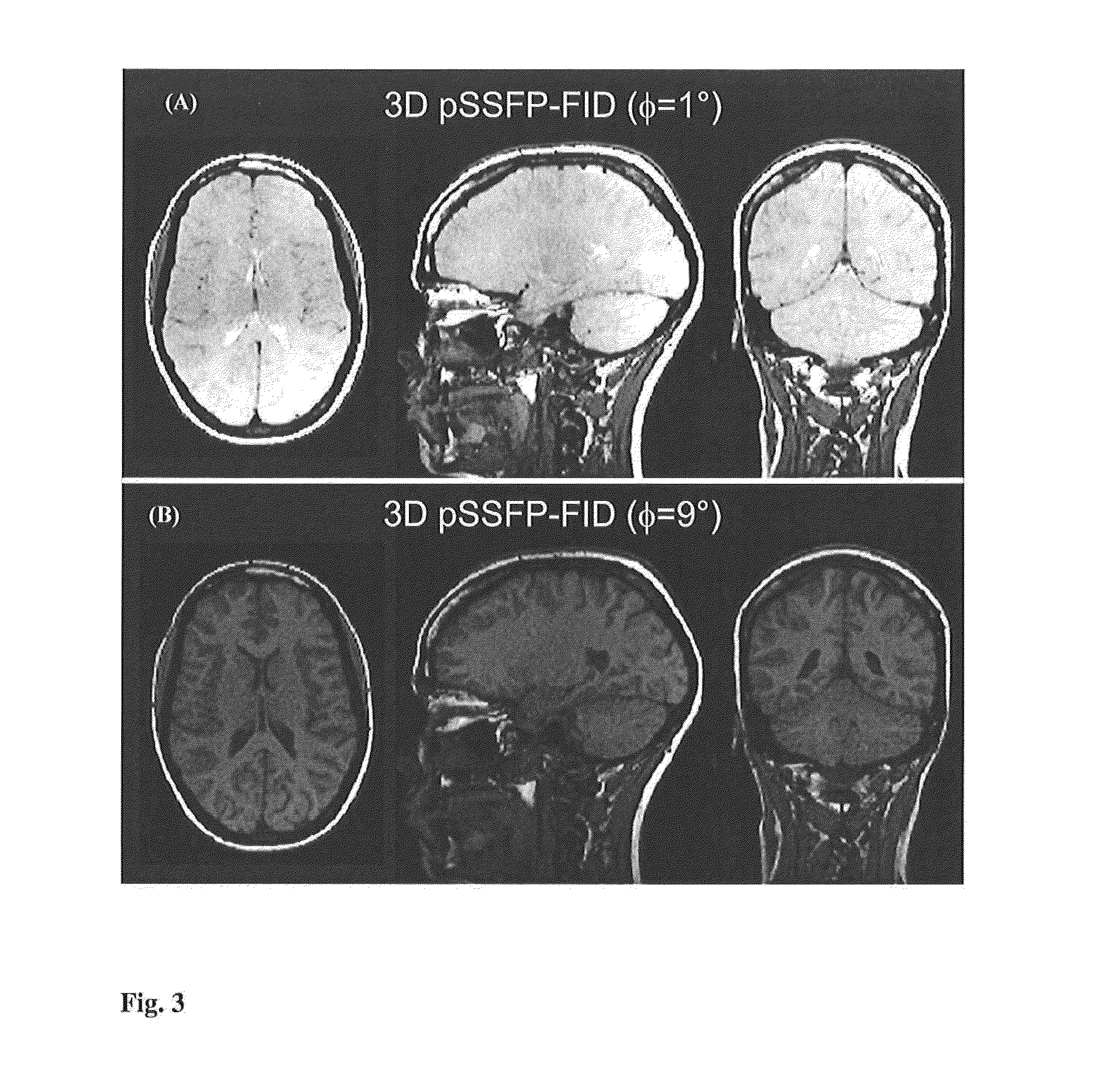Magnetic resonance method for quantification of transverse relaxation times
a magnetic resonance and transverse relaxation technology, applied in the field of magnetic resonance apparatus and methods for quantification of transverse relaxation times, can solve the problems of inconvenient data analysis, lack of diagnostic specificity, and the time-consuming of methods and apparatuses availabl
- Summary
- Abstract
- Description
- Claims
- Application Information
AI Technical Summary
Benefits of technology
Problems solved by technology
Method used
Image
Examples
Embodiment Construction
[0031]For a more complete understanding of the present invention and advantages thereof, references is now made to the following description of various illustrative and non-limiting embodiments thereof, taken in conjunction with the accompanying drawings.
[0032]The difference between contrast-based and quantitative MRI is illustrated in FIG. 1, showing a T2-weighted image (A) and a quantitative T2 map (B) of the human brain. The axial image displayed in FIG. 1A was acquired using a SE sequence known in the art, whereas the image shown in FIG. 1B was acquired using one embodiment of the invention described herein. The contrast between pixels, such as between the cerebrospinal fluid (CSF) and gray matter (GM) or white matter (WM) in FIG. 1a is governed by the T2 relaxation times. This means, the longer the T2 value, the brighter the pixel. In contrast in FIG. 1B, a contrast similar to FIG. 1A is observed, but pixel intensities (PI) yield a direct quantitative measure of the T2 relaxati...
PUM
 Login to View More
Login to View More Abstract
Description
Claims
Application Information
 Login to View More
Login to View More - R&D
- Intellectual Property
- Life Sciences
- Materials
- Tech Scout
- Unparalleled Data Quality
- Higher Quality Content
- 60% Fewer Hallucinations
Browse by: Latest US Patents, China's latest patents, Technical Efficacy Thesaurus, Application Domain, Technology Topic, Popular Technical Reports.
© 2025 PatSnap. All rights reserved.Legal|Privacy policy|Modern Slavery Act Transparency Statement|Sitemap|About US| Contact US: help@patsnap.com



